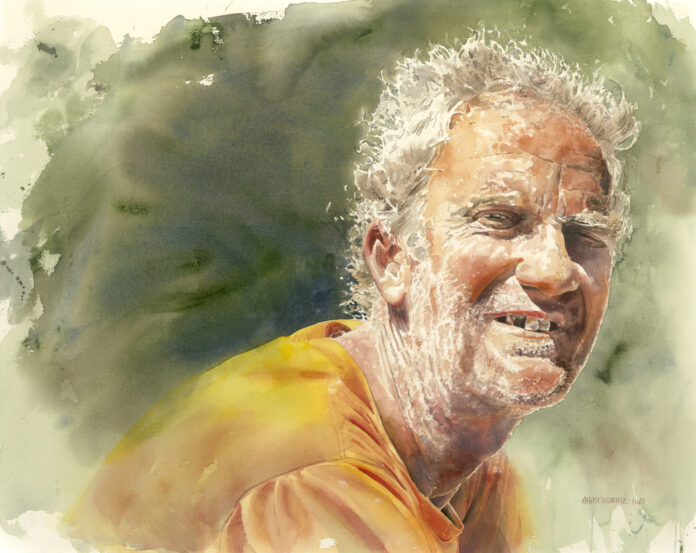Painting from photos, especially if you only have one, can be difficult. Here are some tips and vital steps for painting from a reference photo when it’s all you’ve got.
The following is part of a series featuring a leader in the art community who will be joining us on the faculty of Watercolor Live, a virtual art conference taking place January 24-26, 2024.
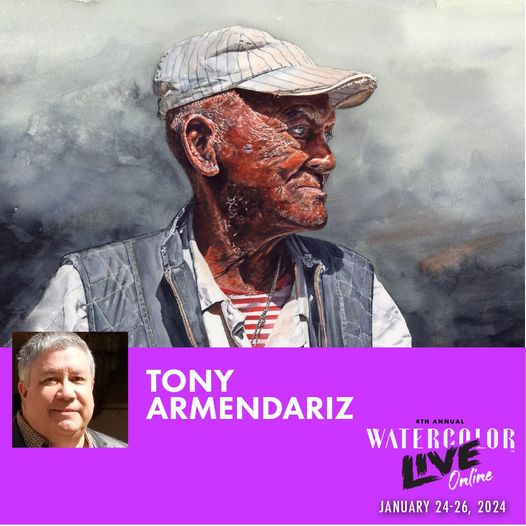
Prepare Yourself
By Tony Armendariz
Painting from photos, especially if you only have one, can be difficult. However, there are some vital steps you can take to help you get the most out of your painting experience.
I learned a lot of this preparation work when I was in art school back before the great development of Photoshop, so this is all back-to-basics stuff. These are steps that many artists at every level use regardless of subject matter.
I’m going to explain how and why producing sketches in drawing and painting can give you a set of great reference material in addition to your photo.
The Reference Photo

This photo of Dave with his strong features, along with the shadow placement and rich colors makes for a great subject to paint. One could look at this and ask “Where do I start? How am I going to handle the hair? What about the background?” Great questions every painter asks!
Before you give in to intimidation and get discouraged, let’s take a look at some tools to tackle this project with confidence. “Tony, but those details,” you say. Don’t worry about “those details” – those will come later. It’s time to create two sketch studies, one in graphite and one in paint, to work as additional reference material along with the photo.
The Drawing
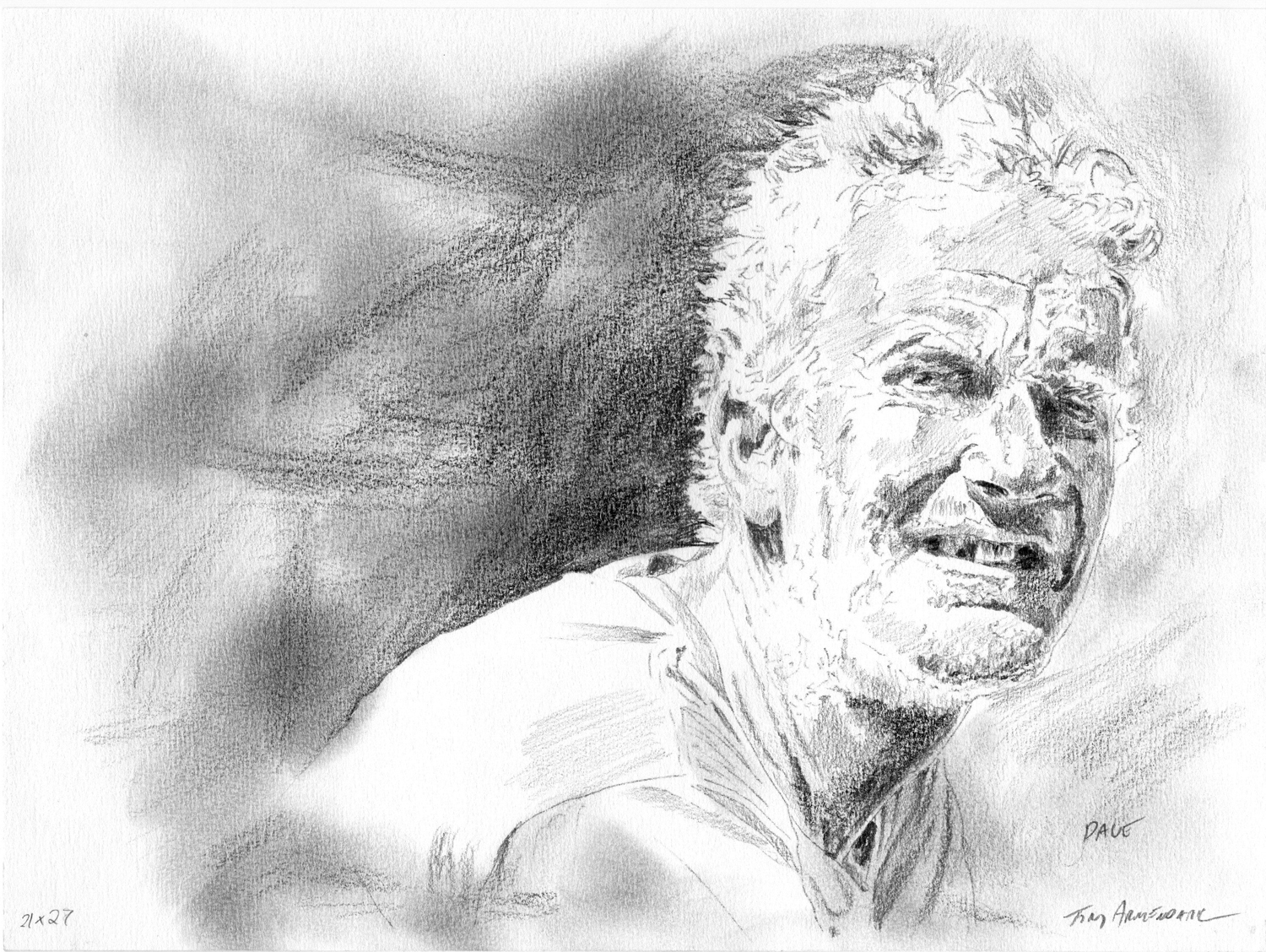
Since the subject of our photo is not available to stop by the studio and pose, we need to first create a sketch drawing (study) to better understand the subject. To produce the drawing, you may want to either employ the grid method to enlarge the photo onto drawing paper or simply trace it out.
If you lack confidence in your drawing skills, I recommend a life drawing class because there’s nothing like it. Since this is a drawing for reference, it might become a bit messy as you’ll be making marks and writing notes on it. In the end, this drawing gives you several benefits.
First, this is where compositional decisions are made, i.e., let’s omit the background and make this portrait a silhouette. Second, it will give you a nice visual for value placement including the highlights, mid-tones and darkest darks. And third, it becomes another guide for showing the details, especially in the shadow areas. Now with that done, we can talk color.
Time to Paint
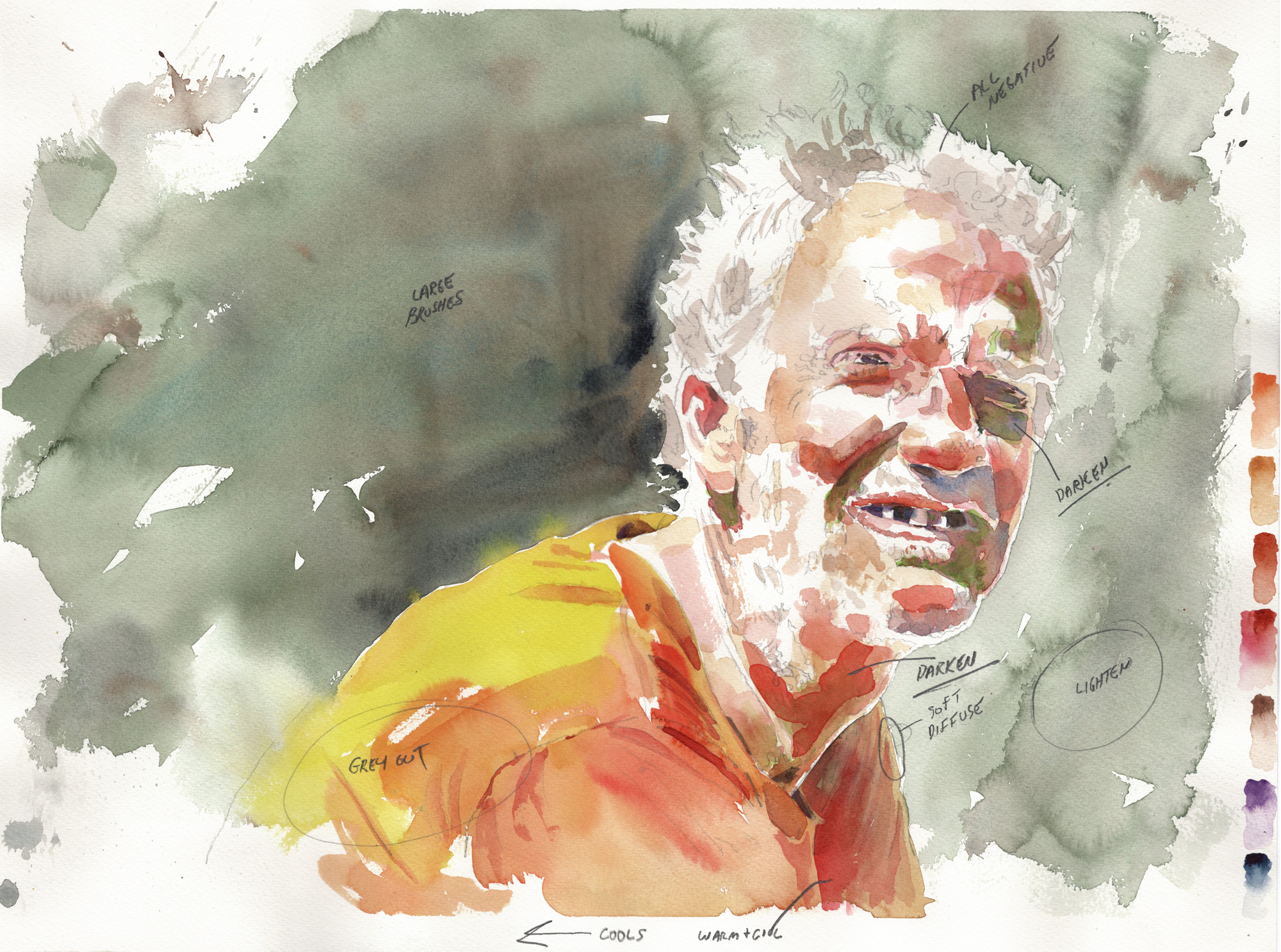
Now is the time to create a painting sketch, sometimes referred to as an intermediate painting. This is the final reference you’ll create before working on the finished painting.
Your approach to this should be quick and direct. This is where decisions of color and technique are made. This is also the time to test out a new brand of pigments, brushes, or papers. Perhaps experiment with a new palette of colors.
Give some thought to techniques such as wet-onto-wet, where to use drybrush, and if you should paint directly or employ a more layered approach. You may want to paint multiple sketches to try different approaches.
Lastly, always keep scrap paper available for testing your color mixes and such.
Final Thoughts
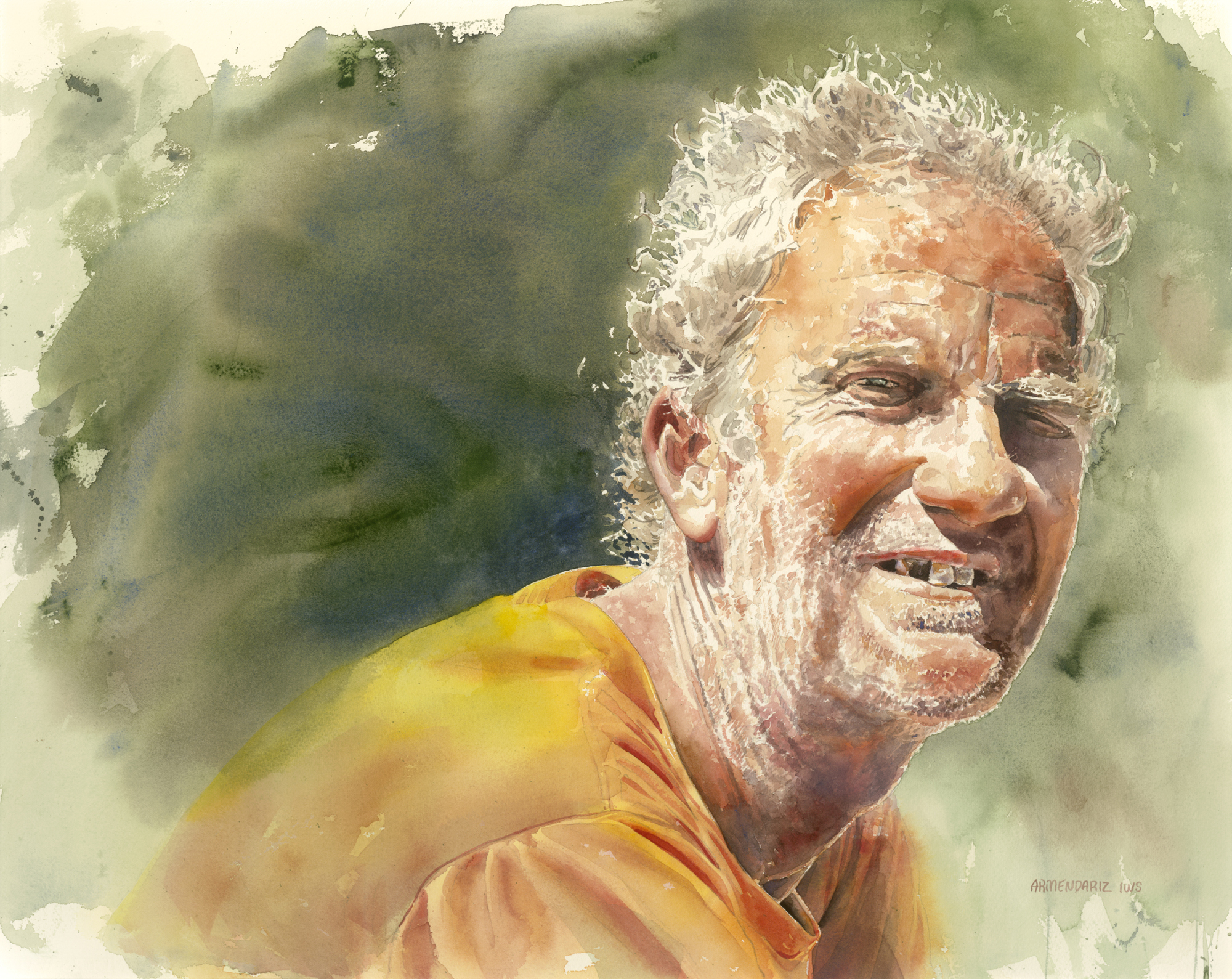
Developing your process for painting from photos takes time and will become more intuitive as time goes on. By creating these additional reference materials, your confidence level going into your final painting will become stronger as you prepare yourself.
Connect with the artist at armendarizart.com.
***
Become a Realism Today Ambassador for the chance to see your work featured in our newsletter, on our social media, and on this site.


